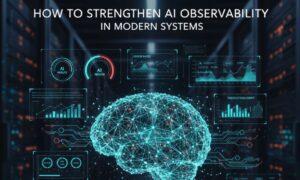For decades, IBM i systems have reliably powered sectors like banking, logistics and manufacturing—yet updating them remains risky. Much of their logic is locked inside decades-old RPG and COBOL code and resides only in the minds of veteran engineers. As a result, 74% of major refactoring or migration projects fail due to lack of visibility.
Why traditional tools miss the mark
Existing tools—static analyzers, documentation generators and legacy-modernizers—help in limited ways:
- They surface syntax or code‐quality issues but don’t map business logic or architecture.
- They produce long documentation but not in an easily consumable form.
- They push rewrites or conversions, which can destabilize systems without explaining what the code really does.
What’s missing is a system-level view: a way to understand architecture, data flows and business rules in a comprehensible, actionable way.
Enter Enterprise Code Intelligence (ECI)
ECI fills this gap by offering a transparent layer over the existing system. A strong ECI platform should:
- Understand the full stack—code, data, jobs, business rules—not just files.
- Provide plain-language documentation and visuals that are usable by developers, analysts and auditors alike.
- Visualize architecture with ER diagrams, call graphs and process flows.
- Link every question to its source in the code, so teams know exactly why something happens.
- Offer natural-language Q&A (“Where is the credit-limit enforcement?”) that drills straight down into RPG routines, tables and job relationships.
- Deploy securely – on-premises or cloud – without forcing a rewrite.
The benefits
- For engineers: Faster onboarding; they can understand functional areas, dependencies and code links within days instead of weeks.
- For architects: Clear visibility into dependencies across programs, files and data flows, helping identify risk before changes begin.
- For managers: Decision-making speeds up via impact maps showing blast radius, code pins, and suggested tests.
- For auditors/compliance officers: Documentation is always current since it’s generated automatically from the live system, not written by hand.
The bottom line
In an era of AI and modernization buzz, IBM i teams don’t necessarily need a full rewrite. What they need is clarity—a real view of what’s happening today, a foundation of confidence to make safe changes, and continuity so they preserve what already works. With ECI, the path is: clarity → confidence → no disruption.





























